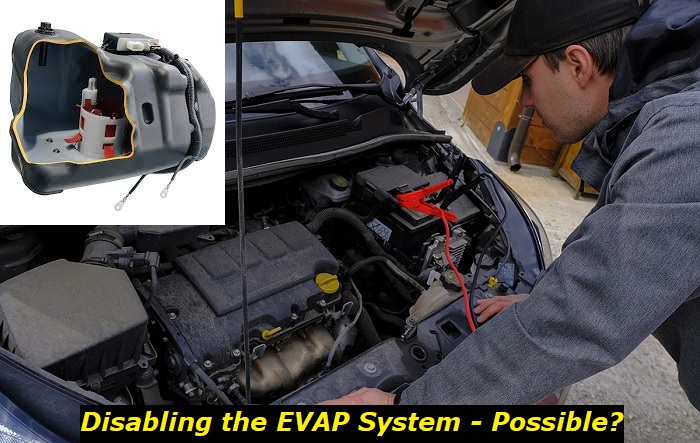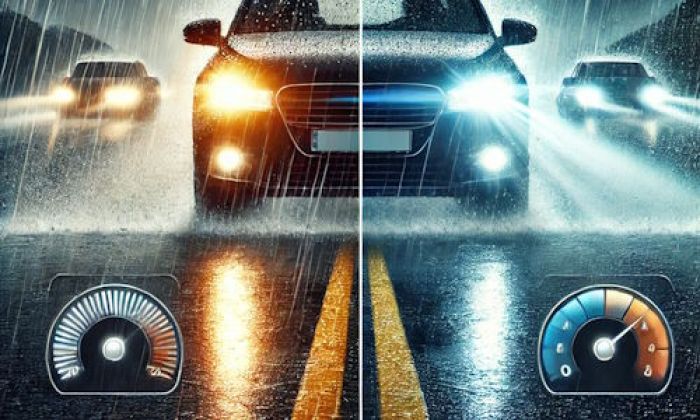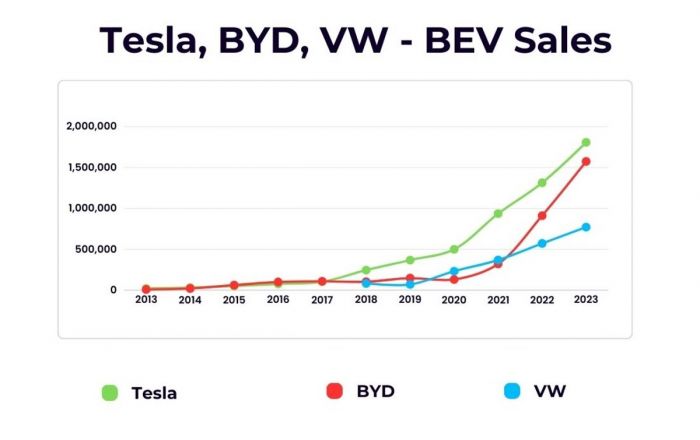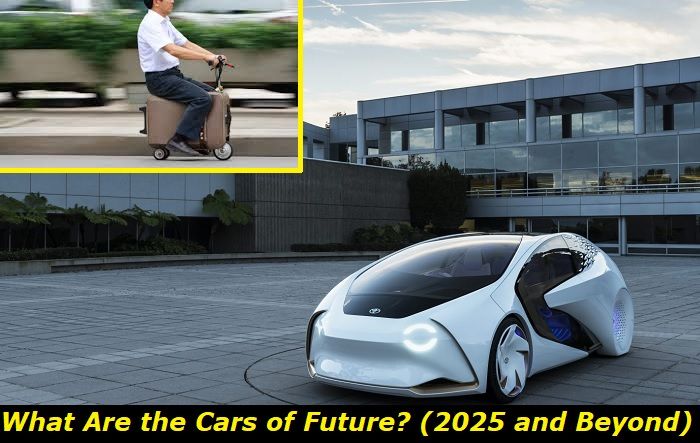When we talk about cleaning vehicle emissions before they enter our environment, many think of the tailpipe emissions only. Most drivers do not know that gas fumes evaporating from the fuel tank and fuel system are equally harmful to the environment. If you do not keep this in check, your gasoline-powered vehicle may fail the emissions test. This is even more dangerous because it pollutes the environment even when the car is parked in your driveway.
Fuel supply upgrades highlights
- Commonreasons:more power, need for efficient supply, higher pressure
- Average prices:$800 - $2,500
- Average waiting time:2 - 7 days
- Common problems:aftermarket parts problems, issues withbadinstallation
- DIY mods:usually,impossible
- Level of satisfaction:high

What Is EVAP System on a Car?
Thankfully, gas-powered vehicles have an Evaporative Emission Control system that minimizes fumes evaporating from the fuel tank from hitting the environment. This system has been on the market since the 1970s.
A typical EVAP system comprises the fuel tank, vapor storage canister with activated charcoal, hoses and valves, and a fuel tank gas cap. This system keeps evaporative fumes from going directly into the environment. When you stop the engine, vapors from the fuel tank pass through vent lines into the vapor canister.
The canister traps and stores the fumes until the next time you start the engine. When your engine attains its standard operating temperature, your PCM lets the vapor out and into the combustion chamber. Your Powertrain Control Module opens a purge valve that directs the vapors from the canister.
The Evaporative Emission Control system is an active system that requires little to no maintenance. Before the OBD-II scanner era, the Powertrain Control Module had no means of verifying whether the EVAP system was working correctly or not. A mechanic only looked at the EVAP system when a vehicle malfunctioned, leading to a too rich or too lean condition. Mechanics treated a malfunctioning EVAP system as a performance concern.
In modern vehicles equipped with On-Board Diagnostic capabilities, the Powertrain Control Module monitors the EVAP system to ensure it constantly functions appropriately. The PCM watches the fuel system to ensure no hydrocarbons are leaking into the environment.
The PCM monitors the Evaporative Control System to ensure the air flows from the EVAP canister to the engine and that the fuel tank, canister, and fuel delivery system do not leak.
The Powertrain Control Module operates the EVAP system under specific driving conditions on all gas-powered vehicles equipped with the On-Board Diagnostic system. The system detects vapor leaks and sets a Diagnostic Trouble Code followed by the "Check Engine" light.
The Evaporative Control System operates under precise conditions, including engine running characteristics, fuel tank volumes, and ambient temperature requirements. Your vehicle's PCM has a strict diagnostic routine capable of detecting the slightest leak in the fuel system or the vapor canister.
The PCM detects even minor leaks that cannot be isolated for repair, but they cause your vehicle to ask for attention by illuminating the "Check Engine" light.
This poses the question,
Can You Delete the EVAP System? How to Do It
Yes!
You can delete the EVAP system. However, you have to ensure you do it right. Follow these steps to bypass your vehicle's EVAP system.
What you need:
- A WD-40 spray
- A ratchet
- An extension
- Scissors
- A vacuum cap assortment kit
- A wrench
Step One
Once you have these ready, remove the bad charcoal canister. The vapor canister has three lines, two on top and one at the bottom. Using the WD-40 spray, lubricate the lines on top of the canister, and use a plier to squeeze and twist. They will come out quickly and easily.
Next, lubricate the line at the bottom of the canister. Using a plier, twist and pull it out. This loosens the engine vacuum line. You successfully deleted/ bypassed the charcoal canister.
Step Two
In the first step, we bypassed the charcoal canister; now, we are bypassing the purge valve. The EVAP system has a solenoid plugged into a line on the side with a nut at the bottom. The side plug only requires a simple pull, and it is out of your way. Use an open-ended wrench and a ten-millimeter socket to remove the nut at the bottom.
The purge solenoid has two vacuum lines; one line goes to the already disconnected vapor canister, and the other goes to the engine's air intake manifold. Locate the engine vacuum line that is still connected, and remove it.
From your engine cap assortment kit, find fitting caps to close the open engine vacuum ports.
Step Three
In this step, you loop the remaining hoses to avoid vacuum leaks. These hoses include the feed and fuel vapor return lines. If you leave these unattended, your engine bay will soon smell fuel fumes.
Your engine vacuum line has a small piece of rubber line. To complete your EVAP deletion process, flip that rubber line and plug both sides on the ports.
Why Would You Want to Disable the EVAP Sysytem?
As mentioned earlier, your vehicle's PCM is quite sensitive when monitoring the EVAP system. It can issue an engine malfunction signal because of a slight fuel vapor leak that cannot be isolated and repaired. This is only one of the reasons you would want to get rid of the EVAP system in your car.
Read on for more reasons.
1) Crushed Charcoal in the Canister
Inside the EVAP canister is activated charcoal that assists in trapping and storing fuel vapor before it goes into the engine for combustion. The charcoal functions appropriately because of the numerous pores that collect and lets out fuel vapor when the purge valve opens.
However, as you operate your vehicle, many factors can affect the porosity of the charcoal in the canister. For instance, the charcoal in the canister turns into powder with time, resulting in the reduction of the pores. Also, liquidized fuel vapor escaping into the canister can harm the porosity of the charcoal in the canister.
When the charcoal particles lose the ability to trap and store fuel vapor, they block the fuel vapor vent lines, giving you enough reasons to bypass the EVAP system. If you keep driving with clogged fuel vapor vent lines, your engine may suffer more damage.
2) Clogged Nozzles
When the outlet nozzle blocks, they cause your PCM to set DTC codes and illuminate the "Check Engine" light. The vapor canister nozzles are typically exposed to the atmosphere, making them vulnerable to damage because of dirt and dust from the environment. You can avoid this problem by cleaning these nozzles regularly. If you do not clean the nozzles, the alternative requires you to delete the EVAP system.
3) Problems with the Purge Valves
One of the common issues with EVAP systems is that most purge valves do not close fully. This leads to the vehicle's PCM issuing a DTC code and illuminating the "Check Engine" light. This makes it hard to operate your modern vehicle and may force you to disable the EVAP system altogether.
4) Faulty Charcoal Filter
Another factor leading to a faulty EVAP system is clogged charcoal filters. The vapor canister has inlet and outlet valves. When these inlet and outlet filters lose their proper operating qualities, they allow charcoal particles to escape the canister through the purge valve and into the engine combustion chamber.
This problem may cause more problems for your engine. You may want to delete the EVAP system from your vehicle to eliminate the issue.
Can I Clean the Charcoal Canister to Fix My EVAP System Problems?
It is a possibility.
You can clean the charcoal canister in the EVAP system using an air compressor. This process can help you determine whether you have a problem with the canister. You may blame the canister when you have clogged fuel vapor lines or filters.
The process requires you to remove the fuel vapor canister. Then, using an air compressor set at a specific PSI, blow air through the canister to clean it without damaging the charcoal and other components inside the canister.
Be sure to consult your vehicle owner's manual for the proper procedure. If your vehicle does not have a canister cleaning procedure in the manual, consult a professional mechanic, or replace the canister altogether. Additionally, avoid using any liquid to clean the canister. This can damage internal components and the charcoal in the canister.
Mostly, you should avoid cleaning the canister. Instead, disable the EVAP system, or replace the canister with a brand-new one.
Conclusion
Can you disable the EVAP system in your vehicle? And why would you want to do that?
Yes, you can delete the Evaporative Control system of your vehicle. The reasons are endless. The EVAP system provides a storage system for evaporative gasoline fumes and recycles them back into the engine to combust with the fuel/ air mixture. This is an excellent feature that keeps the environment safe.
However, if the system fails, do not hesitate to disable it.
About the authors
The CarAraC research team is composed of seasoned auto mechanics and automotive industry professionals, including individuals with advanced degrees and certifications in their field. Our team members boast prestigious credentials, reflecting their extensive knowledge and skills. These qualifications include: IMI: Institute of the Motor Industry, ASE-Certified Master Automobile Technicians; Coventry University, Graduate of MA in Automotive Journalism; Politecnico di Torino, Italy, MS Automotive Engineering; Ss. Cyril and Methodius University in Skopje, Mechanical University in Skopje; TOC Automotive College; DHA Suffa University, Department of Mechanical Engineering






Add comment